Spring, the revival of nature, brings new life and hope. As everything is renewed, hanfu enthusiasts are also looking for inspiration for the new season's outfits. Spring is the perfect time to show off the style of hanfu, with the perfect combination of light fabrics, bright colors and classical designs, displaying an irresistible charm. In this article, we'll take a look at the latest trends in hanfu for spring 2024, so let's step into a fashion world full of classical beauty and feel the perfect blend of ancient style and modern aesthetics.
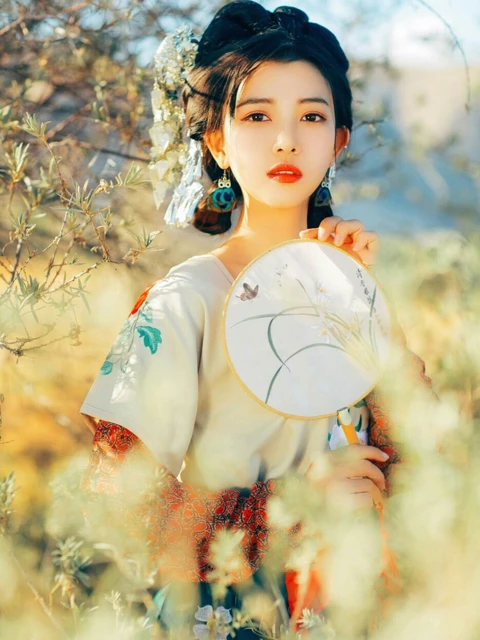
Spring Dressing in Ancient China
Shan (衫, shirts) and Ao (袄, jackets) are garments frequently worn in the springtime within the traditional hanfu attire. Typically crafted from lighter, more delicate materials such as brocade and silk, they suit the climatic characteristics of spring.
The Banbi (半臂, half-sleeve shirt), owing to its lightweight nature, is especially popular during this season. It can serve both as an inner shirt and as an outer garment. Highlighting the interlined garments that provide warmth without causing overheating, thus becoming the favored choice in spring hanfu. These consist of a single layer underneath with a silk outer layer.
Since the pre-Qin period, it has been a tradition among the ancient Chinese to venture outdoors in spring, to revel in and appreciate the beauty of the season. The "Rites of Zhou" mention, "In the month of mid-spring, order gatherings of men and women."
Women's clothing at that time primarily consisted of Shenyi with cinched waists, trailing hems, right overlapping fronts, and came in either curved or straight hems. By the Wei and Jin periods, the Shenyi remained predominant, but the cultural influences of the era led to the development of a knee-length divided robe—known as the "Ru (襦)".
By the Tang Dynasty, the popular attire for women venturing outdoors consisted of a short upper Ru garment paired with a straight skirt, a silk scarf draped over the shoulders, and a veil cap on the head. In the Song Dynasty, women sometimes added a Beizi (褙子), a garment with open sides and unjoined front and back flaps, over their clothes. By the Ming Dynasty, women's wear included crossed-collar jacket and skirts, accompanied by a Beizi or a Bijia.
Spring in Ancient Poetry
Poetry also abounds with references to spring attire. The beauty of these garments and the elegance of poetry enhance each other, offering a dual delight to both the eyes and the soul.
长裾连理带,广袖合欢襦(汉·辛延年)
"Long skirts with connecting belts, wide sleeves and joyful shirts." (Han, Xin Yannian)
In this line, "long skirts" refers to the trailing part of a skirt, usually touching the ground to showcase the gentle and elegant demeanor of the female protagonist. "connecting belts" are the ties that secure and adorn the front and back sections of the garment, while "wide sleeves" suggest wide sleeves, and "shirts" refer to garments similar to short jackets or tunics. The entire line delights in its beauty and conveys a sense of harmony, well-being, and joy.
绣罗衣裳照暮春,蹙金孔雀银麒麟(唐·杜甫)
"Embroidered silk garments glow in late spring, creased gold peacocks and silver kirins." (Tang, Du Fu)
"Silk" here refers to a thin, transparent silk fabric. "embroidered silk" is fabric embroidered with gold, silver, or colored silk threads, typically used for high-end clothing. The words "embroidered silk" convey a sense of luxury and finesse, further emphasized by the "creased gold peacocks and silver kirins," highlighting the lavish and exquisite nature of the woman's attire.
嫩麹罗裙胜碧草,鸳鸯绣字春衫好(宋·晏几道)
"Tender yellow-green silk skirts surpass green grass, paired mandarin ducks embroidered on a spring shirt are delightful." (Song, Yan Jidao)
"Yellow-green" here refers to a pale yellow or light yellow-green hue. The "silk skirt" is light, perfect for spring and summer wear. These lines vividly showcase the vitality of spring and the youthful beauty of the woman, also suggesting that people in spring are as vibrant and hopeful as the season itself.
Spring Hanfu Styling
For hanfu colors, we can carefully select soft, warm hues to complement the vibrant, life-filled characteristics of spring. Unlike the intense vibrancy of summer, spring colors are typically pale and subtle, hence opting for hanfu in lower saturation shades is advisable.
Peach pink, resembling early spring peach blossoms, is delicate and vibrant; wisteria purple, akin to blooming wisteria in spring, is elegant yet romantic; light blue, like the tender leaves of early spring, imparts a sense of vitality. These colors not only align with the traits of spring but also enhance the wearer's temperament and charm.
In terms of hanfu styles, each individual should choose based on their body type and personal aura. For instance, those with round faces might consider styles like the Beizi or crossed-collar garments, which visually soften the roundness, softening facial lines.
For petites, curved hems can elongate leg lines, achieving a visually taller effect; Qixiong dresses suit those with slender figures, accentuating their graceful stature, while Aoqun appear more dignified and are more suitable for those with a balanced figure and mature temperament.
Furthermore, men and children's hanfu ensembles feature distinct characteristics and considerations. Men might choose styles such as Zhiju, Shenyi, or robes, with colors tending towards dark shades like black, deep blue, or dark green, embodying solemnity and maturity. Of course, other colors can be chosen based on personal preferences and the occasion. Men can also complement their outfits with minimalist accessories such as jade pendants and hairpins to enhance the overall texture of their attire.
When selecting hanfu for children, livelier and cuter styles are advisable. Bright colors such as red, pink, and yellow can make the attire appear more vibrant. Accessories like small hair ornaments and sachets can also be added to highlight the children's innocence and charm. Additionally, it is important to consider the safety and comfort of the accessories to avoid inconvenience to the child.
As the warmth of the spring sun gradually saturates the earth, our exploration of hanfu continues to deepen. This spring's hanfu trend is not just a simple return to the ancient style, but also a modern interpretation of the deep roots of traditional culture. From popular muted hues to innovative design concepts, each hanfu is a tribute to oriental aesthetics. We hope this article can provide you with some inspiration, whether in your daily life or for special occasions, to choose a suitable hanfu, so that this spring, you are not only a person who enjoys the flowers, but also a scene in the flowers.
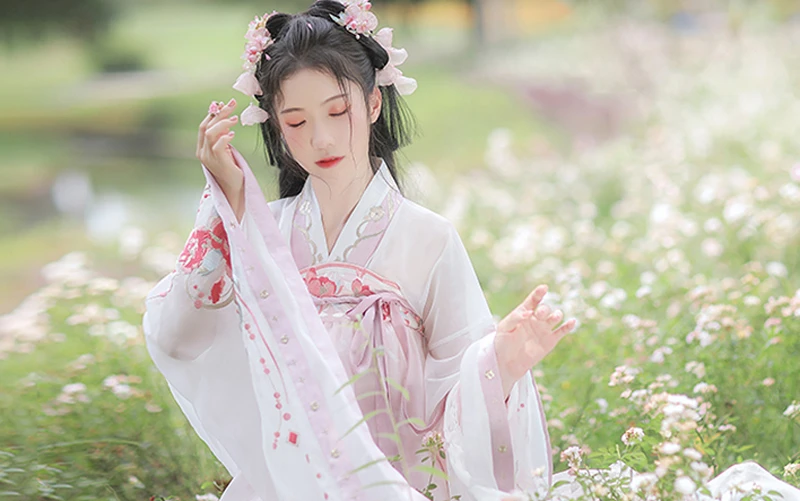

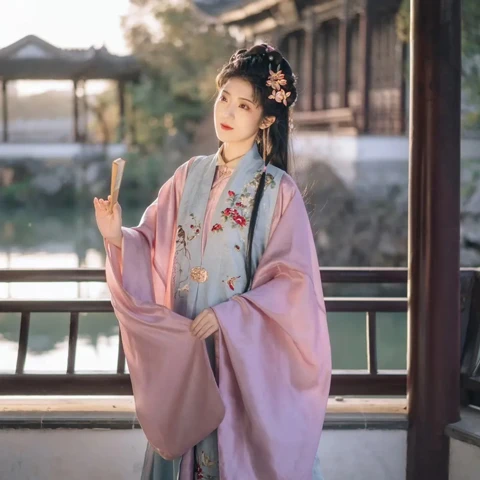
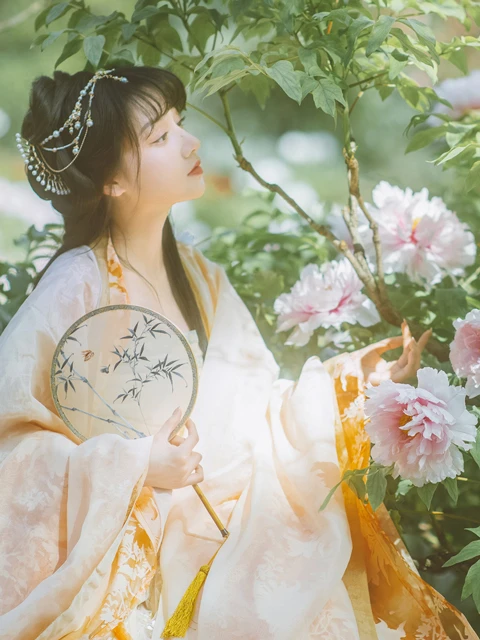
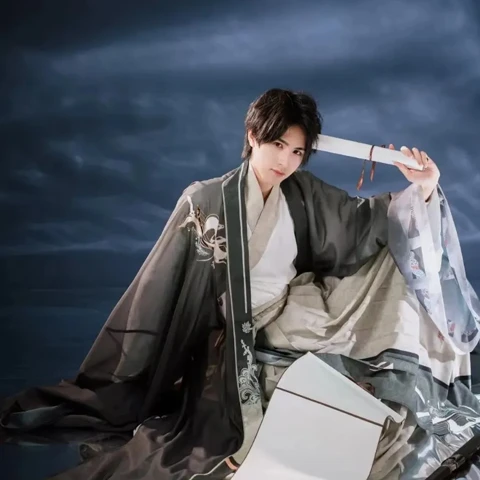



Beautiful 💖👀